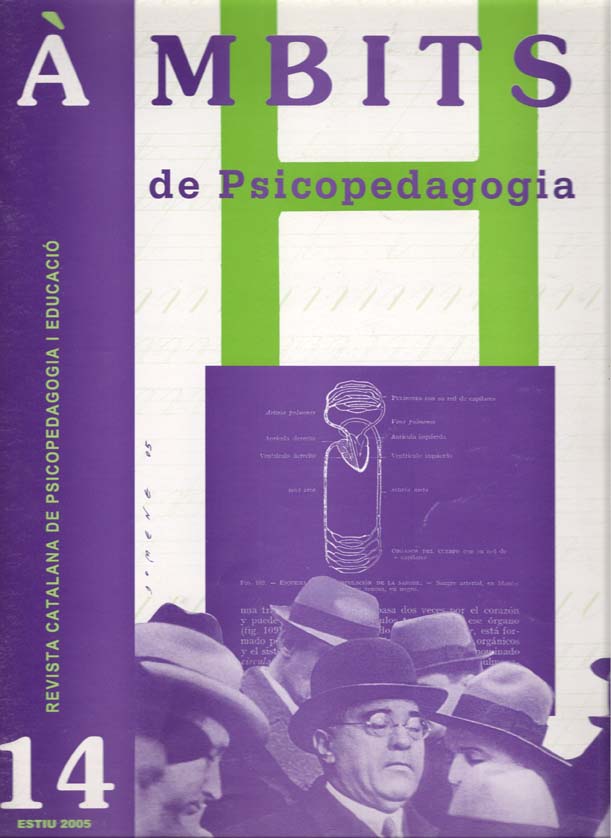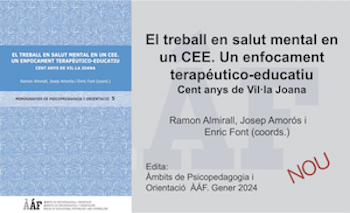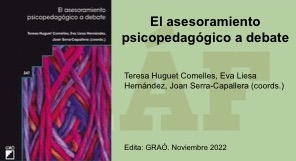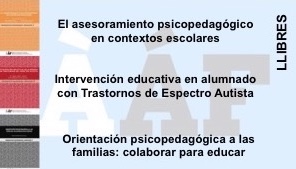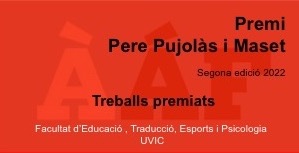Bullying: the necessity of a no blame approach
Abstract
Violence situations, specially those who are related to power abuse –like bullying- can wake up strong feelings of rejection in the intervention team. Feelings that translate to the agressor of explicit way or by means of the nonverbal language.
In these circumstances it is difficult involves the aggressor in the conflict resolution. In this paper, following the research of the professor Anatol Pikas –Uppsala University (Sweden)- we highlight that the cognitions and emotions of the intervention team in front of the children implied in and acute situation of bullying have determining role in the conflict resolution. It is essential that the intervention team takes and active not blaming position to: (1) involves the aggressor in the conflict resolution, (2) break the violence circle and not to practice “violence against the violent”, (3) counteract the effects of a possible manipulation in which the aggressor is presented as victim to us, and (4) solve the situation from a pedagogical and educational point of view in favour of all those implied.
References
COLLELL, J., ESCUDÉ, C. (2003): “El maltractament entre iguals al parvulari: una aproximació al fenomen de la victimització relacional”. Àmbits de Psicopedagogia, 7, pp. 16-20.
COLLELL, J., ESCUDÉ, C. (2003): La mediació en els casos de maltractament entre iguals a l’escola (bullying). Comunicació presentada a les IV Jornades de Mediació a Olot.
COLLELL, J., ESCUDÉ, C. (2003): “L’educació emocional”. Traç, Revista dels mestres de la Garrotxa, 37, pp. 8-10.
COLLELL, J., ESCUDÉ, C. (2004): “Rol de les emocions en els processos de maltractament entre alumnes”. Àmbits de Psicopedagogia, 12, 21-26.
DAMASIO, A. R. (2001): El error de Descartes, Barcelona: Crítica.
GOLEMAN, D. (1996): Inteligencia emocional. Barcelona: Kairós.
LE DOUX, J. (2000): El cerebro emocional. Barcelona: Planeta.
MAIN, N. (1998): Children’s perpetration of violence in early childhood centres: practices of children and perceptions of staff, Paper presented at the conference Partnerships in Crime Prevention, convened jointly by the Australian Institute of Criminology and the National Campaign Against Violence and Crime and held in Hobart, 25-27.
PIKAS, A. (2002): New developments of the Shared Concern Method, School Psychology International, 23 (3): 307-326.
PIKAS, A. (2003): Role-play intervention in Shared Concern method. [video] Kvinnerstaskolan, Sweden (material de treball no publicat).
PIKAS, A. (2003): The know-how of the Shared Concern Method SCm. (treball no publicat)
Downloads
Published
Issue
Section
License
The authors maintain their copyright and give the right to the first publication of the work to the journal, registered under a Creative Commons Attribution-Non Commercial-NoDerivs license. This license allows others to download the works and to share them with others as long as they credit the author, but it does not allow for any kind of modification or commercial use.


